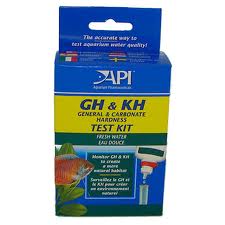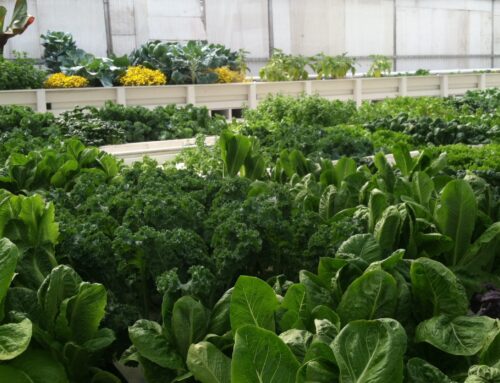To review, carbonates “buffer” or modulate the movement of pH in your water. Buffer strength indicates how well the water in a system resists pH change when either an acid or a base is added. You can measure buffer strength using an API GH and KH test kit, and strengthen your buffer by adding potassium bi-carbonate such as AquaBuffer. The general Rule of Thumb in the aquarium industry is that you should have carbonate levels of at least 4 dKH (dissolved carbonate hardness) or measured another way, 71.5 parts per million (ppm) of carbonates.
Why would you want to create a buffer in your aquaponics system? There are a few critical reasons. First, while fish can generally adapt to pH levels that are outside of their ideal range, they cannot handle dramatic, rapid swings in pH. At The Aquaponic Source, we take phone calls every week from customers who are struggling with what appears to be random fish deaths. When we ask them to measure their pH several times during the day, we often see dangerous intra-day swings of an entire point or more! We then ask them to test the KH levels in their water and they nearly always report that they have a level that is below 4.0.
Maintaining a buffer is important for fish and bacterial health. If you get to the point where your system carbonates are completely depleted, your system pH can “crash” (decrease rapidly). If it does, your beneficial bacteria will quickly die and biological filtration will stop entirely.
Third, if you don’t have at least a minimum buffer of 4 dKH established in your system, you will need to manage pH on at least a daily basis (i.e. measure it and adjust as needed). A natural result of the nitrification process is nitric acid, which continually eats away at your carbonate buffer. If there is no buffer to offset the acid, the acid will simply lower your pH, unimpeded. So not only is a lack of carbonates dangerous to your fish and bacteria, but it will also create a maintenance nightmare for you! We often get calls and emails from customers who have a hard time raising their pH. Insufficient carbonate levels is usually the reason why.
So why do some serious aquaponics growers strive for zero carbonates and instead use hydroxide-based compounds to raise pH? As I understand it, they have two complaints about establishing a carbonate buffer. The first is that it makes it more challenging to raise and lower pH, which means they have less pinpoint control over the pH levels of their systems. While this issue may make sense if you are a large commercial farm and have an automatic pH adjustment dosing system, the people we work with don’t want or need that level of control over their pH. We are, after all, trying to establish an ecosystem in aquaponics so we can keep maintenance to a minimum!
The second reason is that un-maintained buffers may eventually be entirely consumed which in turn may lead to a pH crash in your system. Again, while this is true, it is no reason to avoid establishing a buffer in the first place since without a buffer, pH crashes become much more likely! It just means that you need to monitor your carbonate levels and build them back up if they drop below 4.0 dKH.
- Get an API GH and KH Test Kit either from us, or someone else, and figure out what your carbonate levels are.
- If you are above 4 dKH, then you should be fine for now but be sure to retest weekly as part of your normal testing regime. Remember that as your system matures, it will create more and more nitric acid so your carbonate levels will drop over time.
- As you approach a dKH of 4 or lower, we recommend adding potassium bi-carbonate (AquaBuffer) to your system at a rate of 2 ½ teaspoons (12 ml) per 100 gallons of system water for each dKH level you need to go up.
That is it. Your system will benefit from both increased pH stability and increased potassium levels. And your fish and bacteria will thank you!


